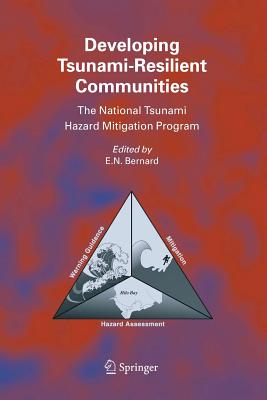You are here
Back to topDeveloping Tsunami-Resilient Communities: The National Tsunami Hazard Mitigation Program (Paperback)
$109.99
Usually Ships in 1-5 Days
Description
As the world grieves over the catastrophic loss of humanity from the 26 December 2004 tsunami, we must resolve to learn from nature's lessons. This issue provides a framework and a set of tools to develop communities that are resilient to tsunami. This collection of papers represents a starting point on our new journey toward a safer world. The history of tsunami hazard mitigation tracks well with the history of destructive tsunamis in the United States. Following the 1946 Alaska g- erated tsunami that killed 173 people in Hawaii, the Paci?c Tsunami Warning Center was established in Hawaii by a predecessor agency to the National Oceanic and Atmospheric Administration (NOAA). Following the 1960 Chilean tsunami that killed 1,000 people in Chile, 61 in Hawaii, and 199 in Japan, the United States formed the Joint Tsunami Research E?ort (JTRE) and sta?ed the International Tsunami Information Center (ITIC) in Hawaii. JTRE was formed to conduct research on tsunamis while ITIC, sponsored by the United Nations, was formed to coordinate tsunami warning e?orts of the Paci?c Countries. Many research and mitigation e?orts were focused on the distant tsunami problem. Following the 1964 Alaskan t- nami that killed 117 in Alaska, 11 in California, and 4 in Oregon, the U. S. was confronted with the local tsunami problem. In response, the U. S. established the Alaska Tsunami Warning Center in Palmer, Alaska. In 1992, a Ms 7.
About the Author
Eddie Bernard has served as Director of the National Oceanic and Atmospheric Administration's Pacific Marine Environmental Laboratory (PMEL) since 1982, where he leads a staff of 175 scientists, engineers, and technical support specialists in oceanographic research related to El Ninos, fisheries/ climate interactions, impact of underwater volcanoes on the oceans, and tsunami. Since receiving his Ph.D. in physical oceanography in 1976, he has published over 70 scientific/technical articles on tsunamis and other oceanographic topics. During his 34 year career in NOAA, he has also sailed on oceanographic research vessels and directed the Pacific Tsunami Warning Center. In 1997 he was elected the first Chair of the National Tsunami Hazard Mitigation Program- a five state, three agency partnership to reduce the impact of tsunamis on US coastlines. In 2002 he received the prestigious Presidential Rank Award from President Bush for his exceptional service to the public.
